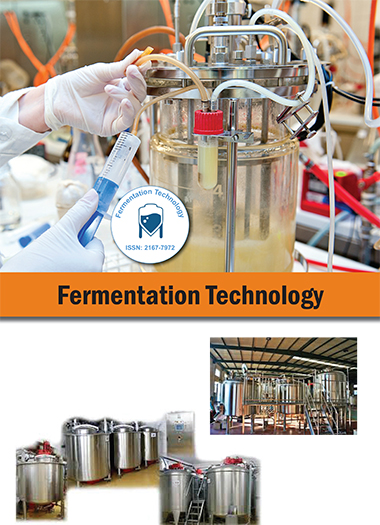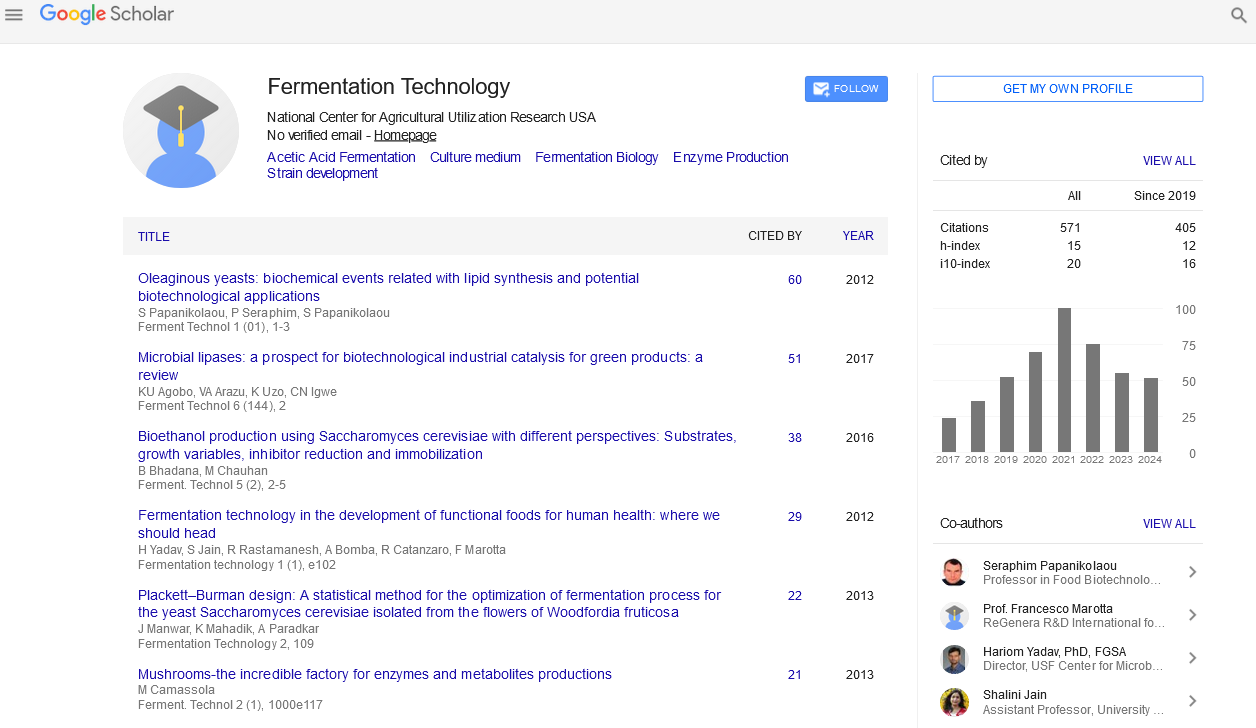Indexed In
- Open J Gate
- Genamics JournalSeek
- Access to Global Online Research in Agriculture (AGORA)
- RefSeek
- Hamdard University
- EBSCO A-Z
- OCLC- WorldCat
- Publons
Useful Links
Share This Page
Journal Flyer

Open Access Journals
- Agri and Aquaculture
- Biochemistry
- Bioinformatics & Systems Biology
- Business & Management
- Chemistry
- Clinical Sciences
- Engineering
- Food & Nutrition
- General Science
- Genetics & Molecular Biology
- Immunology & Microbiology
- Medical Sciences
- Neuroscience & Psychology
- Nursing & Health Care
- Pharmaceutical Sciences
Opinion Article - (2023) Volume 12, Issue 1
A Short Description of Orange Wine
Boris Petrov*Received: 03-Mar-2023, Manuscript No. FMT-23-20064; Editor assigned: 06-Mar-2023, Pre QC No. FMT-23-20064(PQ); Reviewed: 21-Mar-2023, QC No. FMT-23-20064; Revised: 28-Mar-2023, Manuscript No. FMT-23-20064(R); Published: 07-Apr-2023, DOI: 10.4172/2167-7972.23.12.158
Description
Orange wine, also known as amber or skin contact wine is the color of wine made by fermenting white wine grapes with the juice rather than removing the skins, and is made in basically the same way as red wine. There is no official name for orange wine (a type of white wine), but this type of winemaking produces a unique flavor and striking color. Although the term "orange wine" is relatively new, the style of winemaking is ancient. Traditional Georgian winemaking involves his 8,000-year-old process of fermenting whole crushed fruit in clay jars called Qvevri, sealing the jars with clay or beeswax, and burying them underground to cool. White grape varieties such as the ancient Rkatsiteli produce sour, golden wines. Wine is the world's product of fruit wine, and its production volume, consumption volume, and trade volume are all centered on beverages. Next is cider, more commonly brewed in states such as the United Kingdom, France, Switzerland, the United States of America, and China.
The invention relates to fermented orange wine and a preparation method thereof, and belongs to the technical field of fruit wine. The fermented orange wine is brewed by using complete orange juice; and a carbon source of maltose and sucrose and 0.02 % to 0.04 % of pectinase are adopted, Saccharomyces cerevisiae suitable for orange juice fermentation is screened from wine yeast, the orange juice is fermented to form the orange wine, and the orange wine is clarified, aged and filled to form a finished product. In the preparation method for the fermented orange wine, the complete orange juice is used for brewing in the preparation process, the carbon source of the maltose and the sucrose and 0.02 to 0.04 percent of pectinase are adopted, the accharomyces cerevisiae suitable for the orange juice fermentation is screened from the wine yeast, the orange juice is fermented for three stages, the fruit wine of three stages is clarified, the high alcohol content of the orange wine reaches 0.15g/L to 0.31 g/L, and the total ester content reaches 161 mg/L to 234 mg/L. The invention has the advantages that the fermented orange wine has unique flavor, good clarity, health, low cost and high nutrition; and the preparation method is simple in process and environment-friendly, the wine yield reaches over 70 percent, and the preparation method is high in production efficiency.
Fermented orange wine and preparation method thereof, owing to adopted the brand-new technical scheme of the present invention, compared with prior art, the present invention has kept the nutritive value of original fruit juice to greatest extent, some major nutrient index can compare favorably with grape wine, such as vitamins C 15.6 mg/100 g, and red wine is 0.025 mg/100 g; Methionine (Met) 0.39 mg/100 mL, and grape wine is 0.2~4.4 mg/100 mL etc. The present invention has a unique flavor, an alcohol yield of up to more than 70%, good clarity, a healthy type of wine, good safety, low cost and higher nutritional value than fermented orange wine.
The production process of fermented orange wine is simple, technical, environmentally friendly, low production cost, high alcohol yield, high transparency and high production efficiency.
Citation: Petrov B (2023) A Short Description of Orange Wine. Ferment Technol. 12:158.
Copyright: © 2023 Petrov B. This is an open-access article distributed under the terms of the Creative Commons Attribution License, which permits unrestricted use, distribution, and reproduction in any medium, provided the original author and source are credited.

